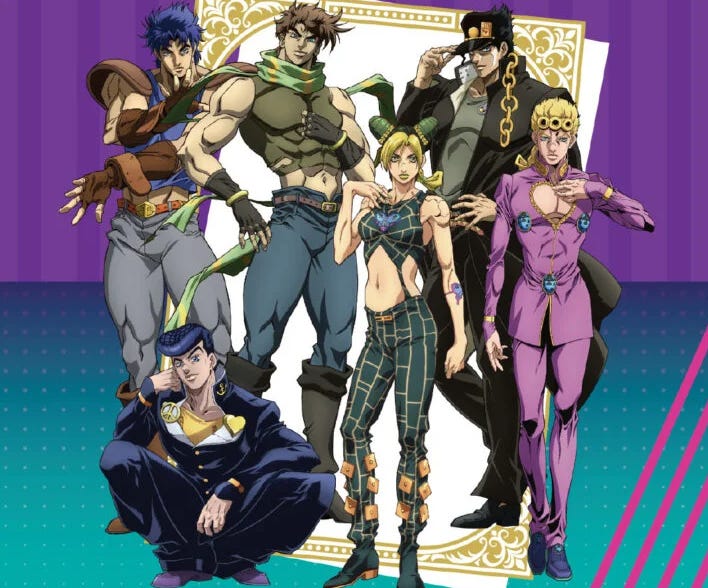How Animé Evolved Fashion In My Hometown
From Screen to Street: How Anime is Reshaping Fashion in the Philippines
This past winter, I traveled home to the Philippines. As I walked the streets of where I grew up, I felt a strange sense of dissonance, caught between the familiar tones of my childhood and the stark contrasts of what the city had become. The fresh air of the province was overshadowed by the pollution of jeepneys, and the familiar faces I once knew blurred into a sea of strangers. Yet, I found a sense of familiarity in the clothing people wore. I was grounded by the vibrant, exaggerated styles that reminded me of the anime shows I used to watch with my cousins growing up.
As I navigated through the busy streets, I noticed flashes of oversized silhouettes, layered streetwear, and pops of color in people’s hair. The playful mix of men in skirts with edgy accessories and women in baggy pants and chunky sneakers felt like echoes of those late nights spent huddled around the TV. I was intrigued and inspired by how anime's influence had allowed my hometown to grow and experiment with styles once confined to the screen.
Before anime's influence, people typically stuck to formal wear, adhering to the norms of neatness and modesty. Bold choices were rare, and clothing felt more like a reflection of tradition than a medium for self-expression. Influenced by deep-rooted values of respectability and colonial history, formality in attire was often seen as a marker of discipline and social decorum, making experimental fashion rare and, at times, even frowned upon.
For many Filipinos, particularly those in smaller towns or more traditional households, standing out through fashion could lead to social isolation. Dressing in a different way might be met with raised eyebrows from family members or community elders. Relatives may see these choices as rebellious or impractical. They might wonder why someone would choose such unconventional styles over the expected norms of polished, and gender-conforming clothing. But over time, anime-inspired outfits introduced by luxury fashion houses became the gateway that encouraged creativity, individuality, and experimentation in everyday outfits.
Since anime is deeply embedded in Filipino childhoods, its aesthetics don’t feel entirely foreign. When an outfit is brought to life from the screen it offers a sense of nostalgia that softens the cultural resistance. As anime-inspired apparel became more accessible, it began to influence a generation eager to express their individuality breaking free from conventional dress codes facing the fear of being ostracized for experimenting with their style.
One of the earliest influences of anime in fashion can be seen in the works of Japanese designers Yohji Yamamoto and Rei Kawakubo for Comme des Garçons. While not directly referencing anime, their unconventional approach to fashion mirrored the artistic and exaggerated proportions often seen in anime character design. Throughout the 80s and 90s, they laid the groundwork for anime’s influence in fashion by bringing avant-garde and exaggerated silhouettes to runways.

In 2018, Jean Paul Gaultier paid homage to designer Pierre Cardin in his Spring/Summer couture show, with designs reminiscent of Cardin’s signature styles. Gaultier infused street fashion with avant-garde elements, such as deconstructed tailoring and playful layering, similar to the eccentric and exaggerated fashion seen in anime characters like those in JoJo’s Bizarre Adventure. Look 8 from the show was my favorite—it felt as though it could seamlessly exist in JoJo’s Bizarre Adventure, blending effortlessly with the series’ creative outfits.
By incorporating streetwear and anime styles into fashion, people were able to recreate outfits and experiment with their own style. Now, anime’s bold clothing choices found its place in the everyday lives of Filipinos, transforming streetwear and fashion culture in the process. Despite the streets of my hometown no longer looking like the ones I grew up on, they now hold a different kind of familiarity. A sort of comfort in a community that embraces the experimentation that I craved while watching anime at ten years old. Seeing outfits from shows like Dragon Ball Z being brought to life displays the cultural shift occurring in the Philippines right now. The rigid formality of the past has given way to an era of self-expression, where style is as fluid and experimental as the characters who first inspired it.
References
Holgate, M. “Jean Paul Gaultier Spring 2018 Couture Fashion Show.” Vogue, 2018, www.vogue.com/fashion-shows/spring-2018-couture/jean-paul-gaultier/slideshow/collection#8.








